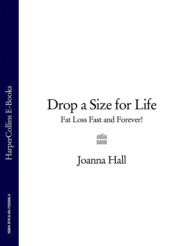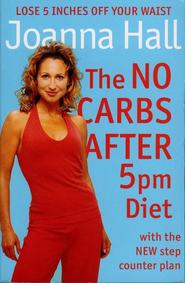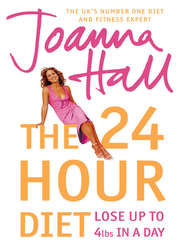По всем вопросам обращайтесь на: info@litportal.ru
(©) 2003-2024.
✖
Body Blitz: 5 Simple Steps to Permanent Fat Loss
Настройки чтения
Размер шрифта
Высота строк
Поля
Proteins are essential for tissue repair, maintenance and growth. They are crucial for our health as they make up part of every cell in the body. A regular supply of protein is required in the diet to compensate for the continual loss that occurs in the body. Proteins are made up of smaller units called amino acids. Not all proteins contain all the essential amino acids required by our bodies – this is why if we are vegetarian we need to ensure that we have a variety of protein sources to ensure our bodies are getting a complete range of the necessary proteins. Protein can be divided into two groups: dairy products, which include cheese, yoghurt, eggs and non-dairy sources, which include meat, fish, pulses and beans. The important role that protein plays in repairing the body means that it is much harder for the body to store excess protein as body fat in the cells.
DIETARY FATS
Dietary fats come from a variety of sources. There are various ways of defining fats but one of the simplest is to consider fats as visible and invisible. Visible fats are, as the name suggests, foods that we can see are made of fat. Cheese, butter, oils and creams are examples of visible fats. Invisible fats are foods with a predominant fat content although we may not be aware of it: examples include coconut, avocado and egg yolks. Fats are divided into three groups: saturated, polyunsaturated and monounsaturated. Saturated fats (including trans fats) are non-essential fats because they do not play a healthy role in the body and they are associated with an increased risk of heart disease, whereas monounsaturated fats and the omega-3 and omega-6 sources of polyunsaturated fats are essential fats because they have a positive health role to play in the body. Regardless of whether they are essential or non-essential fats they all provide a rich source of energy. See Step Three for more details about dietary fats.
WATER
Water is the most overlooked nutrient in our diet – it forms about 60% of our total weight and is involved in every single chemical reaction in the body. If we don’t get enough water we are not providing the right environment for our bodies to perform effectively. It is very important to drink at least eight glasses of water a day – it really does impact how you feel and how your body works. See Step Two for more details.
…AND ALCOHOL
While alcohol is not strictly a food group in its own right it does deserve a special mention as it is such a pleasurable part of our daily lives. It is vital however that we understand the role it plays in the body and how it constrains long-term fat loss and weight management. Alcohol does supply us with a source of energy but it is not a nutrient as it is not necessary for life and it is harmful to health when consumed in excess. See Step Two for more about this.
GETTING THE BALANCE RIGHT
For your diet to be balanced you need to eat a variety of foods from each food group – the various Body Blitz steps will go into this in more detail. Carbohydrates should form the backbone of your diet, specifically fruit and vegetables and starchy whole-grains. However, don’t fall into the trap of eating too many whole-grain starches in the belief that because they are low in fat you can eat more – they may be low in fat but they still contain calories! Proteins should be consumed in a smaller volume and fats should make up the smallest part of your diet.
Most foods contain a variety of protein, fat and carbohydrate, although the combination can vary greatly from one food to another. Hence we tend to define a food by its main food group. If you consume excess calories from any of these food groups – not just fat – you will gain weight and body fat. Whilst some of the nutrients have specific jobs to do, once these jobs have been done any excess calories will simply be stored as fat within our fat cells.
Each of these food groups will provide an energy or calorie value to the body. Carbohydrate and protein provide 4 calories per gram, fat provides 9 calories per gram and alcohol provides 7 calories per gram. So we don’t have to be an Einstein to realize that we need to look at the composition of the foods we eat as well as the total number of calories we are consuming if we want to control weight and body fat levels.
Unfortunately, there are no miracle foods to ensure weight loss. It is the whole picture of what we eat that is important for our health, weight and body fat. The Body Blitz Plan will show you that with a little knowledge you can eat whatever you want and still realize your weight and body fat goals.
THE BASIC NUTRIENTS
THE BASIC NUTRIENTS
THE LOW-DOWN ON BODY FAT
So why do we have body fat and how can Body Blitz help us get rid of it? Whether we like it or not we all have fat in our bodies. Each one of us is born with 23 billion fat cells and each of these fat cells has the ability to get bigger and bigger, as well as smaller and smaller. A certain amount of fat is important for our bodies as it gives us shape, warmth and insulation – the problem comes when we start to store too much fat in the body from overeating and under activity.
It is inevitable as we get older we are going to lay down more body fat as our body’s metabolism changes. To combat this we need to establish nutritional and exercise strategies to minimize body fat gain and improve our overall health. Fat cells do not disappear but the actual amount of fat in the cells can decrease and increase dependent upon how well we eat and how much exercise we take. The Body Blitz Plan provides you with all the strategies you need to lose body fat and weight – and keep it off for good!
HOW CAN WE DECREASE THE SIZE OF OUR FAT CELLS?
Unfortunately, if we are consuming more calories than we are expending our fat cells will get bigger and bigger. Although fat cells do not generally divide and increase in numbers, if we eat excessively and gain a significant amount of weight (40–50 pounds) then our fat cells will get bigger and divide and it is likely that the body fat gained at this time will pose more of a problem to shift. While this may seem depressing it helps explain why sometimes we look at friends and they appear to have dropped the weight effortlessly, while our own efforts seem to require a lot more persistence. Appreciating this will allow you to approach your Body Blitz Plan with a realistic picture of what you can achieve long-term.
The most effective way to decrease the size of your fat cells is to reduce your weekly intake of calories. This can be achieved through a combination of sensible nutrition and physical activity (see Steps One to Five for specific strategies). For fat cells to get smaller we need to create a calorie deficit of 3,500 calories per week. At first sight this figure can appear alarming, however the trick to effective body fat loss is to ensure that the calorie deficit is achieved slowly and consistently. Spreading the 3,500 over seven days means you are aiming for a decrease of 500 calories each day from your normal daily calorie range. If you split these 500 calories between accumulated physical activities, structured exercise and the nutritional strategies in the Body Blitz Plan, the figure becomes a lot more manageable. As we go through the book you will see how you can achieve this calorie deficit effectively, while continuing to live your life to the full. Different lifestyle constraints will mean that more emphasis will be placed on the different strategies at different times.
WAYS TO SAVE 500 CALORIES A DAY
Accumulated physical activity: Walk to post office rather than drive, take the stairs at work, walk up the escalators. Saves you: 100 calories
Structured exercise: Power walk for one mile. Saves you: 100 calories
Nutrition: Operate starch curfew in evening meal. Replace a portion of pasta with two portions of extra vegetables. Saves you: 200 calories
Replace mid-afternoon snack of 2 slices of bread and jam with an apple. Saves you: 100 calories.
WHY DO WE GAIN WEIGHT FASTER AS WE GET OLDER?
As we get older we actually start to lay down more body fat. This is due to several factors:
1. METABOLIC RATE
After the age of 30 if we are inactive we actually start to lose muscle mass at a rate of
/
–
/
pound every two years. So if you weighed 10 stone at the age of 20 and you still weigh 10 stone at the age of 50, yet you have gone up two clothes sizes and you do not exercise – quite simply, you have lost muscle mass and gained body fat. As the body fat takes up more space, your clothes become tighter and your clothes size goes up. Muscle is metabolically active which means that it burns calories. So if we start to lose muscle mass we actually require less calories to do our everyday tasks. Long-term this means we can potentially be consuming the same number of calories at the age of 20 as at the age of 50 but when we are 50 these calories are not burnt off and we are more prone to laying down body fat. This puts our health at risk and we become frustrated with our shape and fitness.
2. HORMONES
As women start to approach the menopause we enter a stage known as peri menopause – at this time there is a change in our hormones, which may actually encourage our bodies to lay down more body fat.
3. STRESS
Yes, stress does make us fat! When we are experiencing long periods of chronic stress such as overwork, or emotional stresses such as a loss of a partner or moving home, there is a change in our metabolism that encourages increased secretion of the hormone cortisol. If this is left unchecked for long periods of time it encourages body fat to be laid down around our midriffs. Research has shown that storing body fat here actually puts us at a greater risk of heart disease.
Whilst this all may seem a little depressing, the best possible course of action you can take is also the most accessible and cheapest – get active! Taking structured exercise sessions and accumulating physical activity during the day has both a positive and immediate impact on your health and ability to control your weight. See Step Four for more about this.
WHY DO SOME PEOPLE LOSE BODY FAT FASTER THAN OTHERS?
Not everyone will lose weight and body fat at the same rate. We are all different, and there are several factors that can affect our rate of weight and body fat loss.
These include:
1 Your existing metabolic rate
2 Your dieting history
3 Your exercise history
4 Your existing eating patterns
5 Your existing activity patterns
1. YOUR EXISTING METABOLIC RATE
As we have just discussed, our muscle mass starts to decrease as we get older and our metabolic rate tends to slow down, which means we burn fewer calories. Imagine you are 20 years old and you are sitting in a chair, and now imagine you are 50 years old sitting in a chair. Even though you are doing exactly the same everyday activity, if you have not kept up your muscle mass between the ages of 20 and 50 you will be burning less calories sitting still at the age of 50 than sitting still at the age of 20!
Action: Invest in physical activity now! Step Four of the Body Blitz Plan will help you boost your metabolic rate through structured exercise sessions.
2. YOUR DIETING HISTORY











